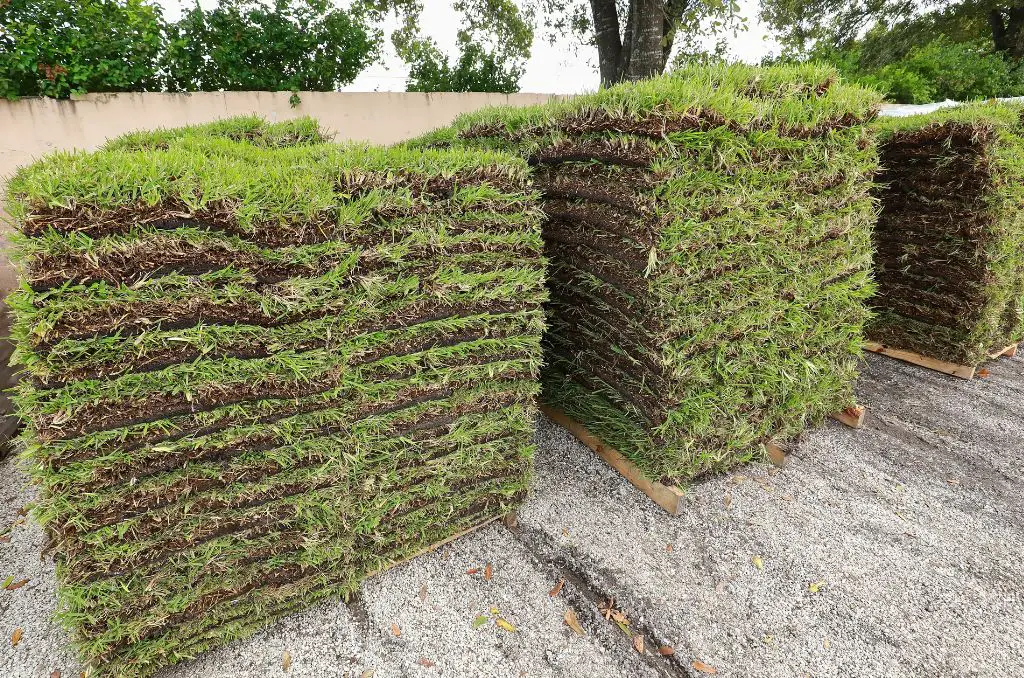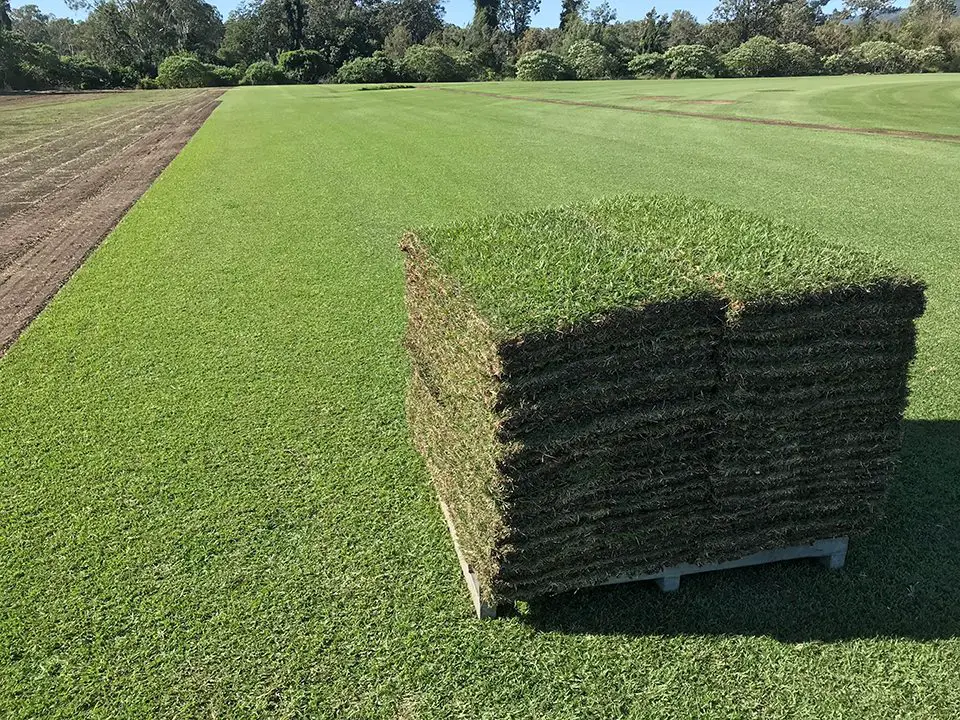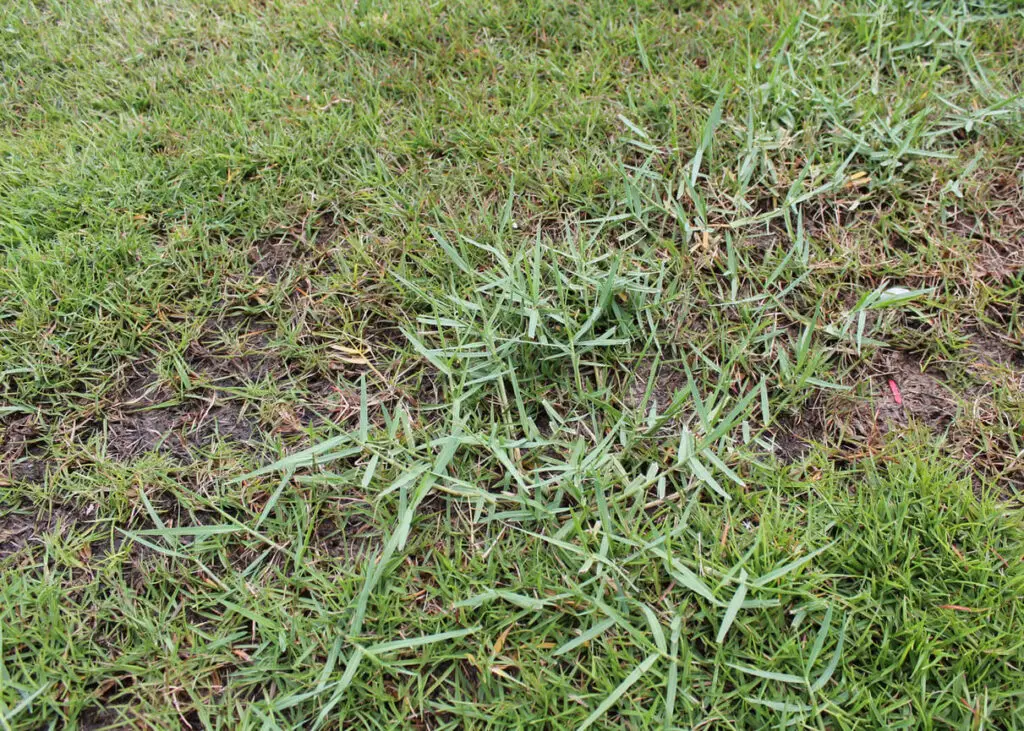How Much Does A Pallet Of Sod Weigh
So you’re thinking about buying some sod for a project and want to know if you can pick it up yourself.
There are certain factors that determine if you can do it yourself.
A pallet of sod grass can easily weigh thousands of pounds.
To move a pallet of sod grass, special consideration must be taken to the type of vehicle and equipment you have available to load and unload.
The total weight of the pallet of grass depends on how thick the grass is cut, the type of soil it’s grown in, and how wet or dry the soil is beneath the turf.

A pallet of sod can weigh between 1000 lbs and 3000 lbs. The average weight of a pallet of sod is 2,000 lbs.
What Affects a Pallet of Sod Weight?
When you order a pallet of sod, and are thinking about picking it up yourself, consider the total weight of the grass and pallet. Weights can vary from month to month and might be different in spring and fall.
If the soil is wet from heavy rain or watering, it will weigh considerably more.
There are several extenuating factors that can affect the overall weight of a sod pallet including:
The type of sod:
Even when different types of grass come from the same location, they can weigh significantly different from each other.
Most warm-season grasses weigh more than cool-season turf grasses.
The root system and grass blade density also affects weight.
We find that St Augustine grass tends to be the heaviest and weighs the most.
Weight varies between cultivars; but on average, a pallet of St. Augustine grass sod weighs between 1800 and 3,000 pounds.
Different types of sod have different densities and moisture contents, which can affect their weight.
The type of soil it was grown in:
Sod grown in soils with high clay content is significantly heavier than sod grown in loamy or sandy soils.
Moisture content:
Sod is typically sold fresh, so it will contain a certain amount of moisture within the grass and soil.
The amount of moisture in the sod can greatly affect its weight.
Wet sod is significantly heavier than when it’s dry, so expect heavier pallets after heavy rains.
The thickness of the sod
When sod is cut thicker with more soil on the roots, each piece weighs more than those cut thinner.
Pallet size:
The size of the pallet can also affect the weight of the sod. Larger pallets hold more and weigh more, which will increase the overall weight .
Can a 1/2 ton pickup carry a pallet of sod?
Most 1/2 ton pickup trucks can easily carry a pallet of sod in the bed.
1/2 ton trucks generally have a payload capacity of 1,500 to 2,000 pounds and towing capacity of much more; and can routinely carry loads up to that weight.
The Ford F-150 has the highest payload rating for a half-ton trucks at around 3,325 pounds; followed by the Dodge Ram 1500, Chevrolet Silverado 1500, GMC Sierra 1500, and Toyota Tundra.
Always check the payload and towing capacity of pickup trucks before attempting to carry extremely heavy loads.
Make note that the payload capacity of a pickup truck cohesively includes the weight of the load; and also the weight of any passengers, tools, or other equipment carried in the truck.
If the load exceeds capacity, it may be necessary to use a utility trailer or transport on multiple trips..
Can a 1/4 ton pickup carry a pallet of sod?
It is generally not recommended to attempt to carry a pallet of sod in a 1/4 ton pickup truck, as the weight of the sod may exceed the payload capacity of the truck.
We see people move pallets of sod with quartre ton pickup trucks, but they usually use utility trailers.
You must understand that the sod may likely max out the capacity of your truck and bottom out the shocks.
So, if you plant to move sod in the bed of your 1/4 ton pickup truck, plan accordingly and check the weights.






